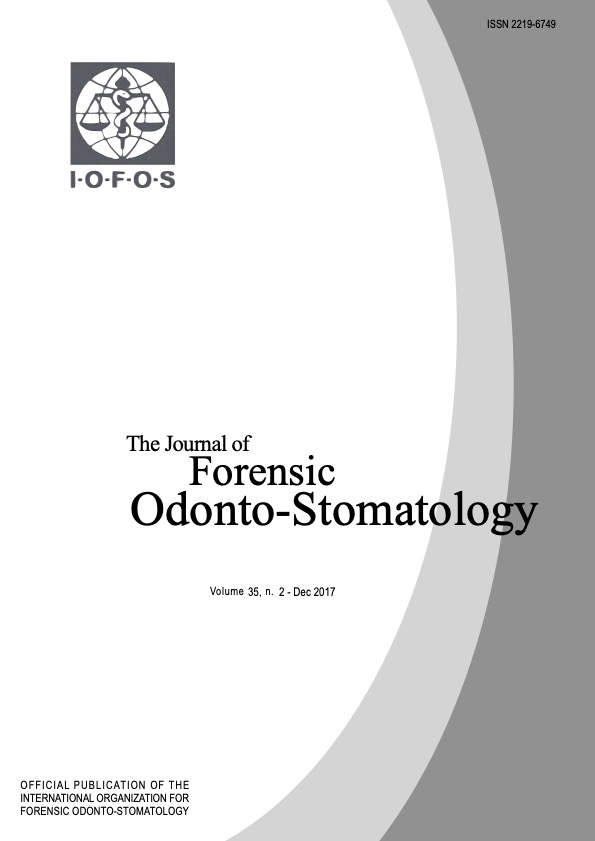Semi-automatic forensic approach using mandibular midline lingual structures as fingerprint: a pilot study
Abstract
Background: Previous research proposed the use of the mandibular midline neurovascular canal structures as a forensic finger print. In their observer study, an average correct identification of 95% was reached which triggered this study.
Aim: To present a semi-automatic computer recognition approach to replace the observers and to validate the accuracy of this newly proposed method.
Materials and methods: Imaging data from Computer Tomography (CT) and Cone Beam Computer Tomography (CBCT) of mandibles scanned at two different moments were collected to simulate an AM and PM situation where the first scan presented AM and the second scan was used to simulate PM. Ten cases with 20 scans were used to build a classifier which relies on voxel based matching and results with classification into one of two groups: “Unmatched” and “Matched”. This protocol was then tested using five other scans out of the database. Unpaired t-testing was applied and accuracy of the computerized approach was determined.
Results: A significant difference was found between the “Unmatched” and “Matched” classes with means of 0.41 and 0.86 respectively. Furthermore, the testing phase showed an accuracy of 100%.
Conclusion: The validation of this method pushes this protocol further to a fully automatic identification procedure for victim identification based on the mandibular midline canals structures only in cases with available AM and PM CBCT/CT data.

